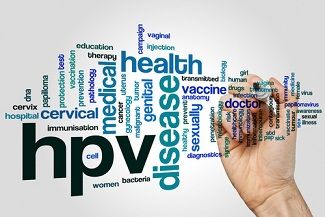HPV Vaccination Does Not Increase Risk of Syndromes with Autonomic Dysfunction
A new Danish study found no evidence of a causal association between the quadrivalent human papillomavirus vaccination and syndromes with autonomic dysfunction.

The quadrivalent human papillomavirus vaccination does not appear to cause syndromes with autonomic dysfunction, such as chronic fatigue syndrome, a new study suggests.
The population based, self-controlled, case series analysis, published in BMJ, aimed to gain more understanding of the association between HPV vaccination and syndromes with autonomic dysfunction. Concerns about the safety of the HPV vaccine arose from anecdotal links between the vaccine and certain syndromes.
“The biggest takeaway from the study, is that syndromes with autonomic dysfunction were not more commonly diagnosed after HPV vaccination,” lead author Anders Hviid, Msc, DMSc, professor of pharmacoepidemiology at Statens Serum Institut in Copenhagen, Denmark, told Contagion®. “The science supports that HPV vaccine is safe and effective.”
The study used data from Denmark’s Civil Registration System and the Danish vaccination register. Universal HPV vaccination of girls age 12 started in Denmark in 2009 after catch-up vaccination for teen girls ages 13-15 on 2008 and vaccination of women ages 20-27 in 2012.
Investigators evaluated 869 Danish female with syndromes with autonomic dysfunction, including 136 with chronic fatigue syndrome, 535 with complex regional pain syndrome, and 198 with postural orthostatic tachycardia syndrome. The case series analysis was nested in a nationwide cohort of 1,375,737 Danish born female participants aged 10 to 44 years during 2007-16.
The incidence rate of these syndromes was 8.21 per 100,000 person years. The incidence rates increased throughout the study and were highest among adolescent girls.
The study found no statistically significant increase in the rate of syndromes after HPV vaccination. The composite outcome of all syndromes with autonomic dysfunction after HPV vaccination showed a rate ratio of 0.99 with a 95% confidence interval of 0.74 to 1.32. Individually, there was no statistically significant increase in chronic fatigue syndrome (0.38, 0.13 to 1.09), complex regional pain syndrome (1.31, 0.91 to 1.90), or postural orthostatic tachycardia syndrome (0.86, 0.48 to 1.54).
The results mirrored the conclusions of the European Medicines Agency and the American Autonomic Society and other studies that found no association between the vaccine and selected syndromes.
Limitations of the study included the possibility of misclassification of syndromes in the registry.
The study authors noted that some adverse events may occur by chance when a vaccine is introduced, but the study does not support a causal association. The study cannot formally exclude the possibility for increased risk, but it is unlikely that a larger increase in the rate of any syndrome is associated with vaccination.
“The HPV vaccine is now also being offered to boys in many immunization programs. Since the majority of safety evidence so far has been from studies of females, it will be valuable to also provide safety evidence from studies of males,” Hviid said.
HPV affects 79 million Americans, predominately in their late teens and early 20s, according to the CDC. About 14 million Americans are infected with HPV each year, and the virus causes about 35,000 cases of cancer annually, including cervical, anal, oropharyngeal, and penile cancers.
A study published last year found that HPV vaccination efforts were linked to lower prevalence of oral HPV among teen girls. Another study found evidence of herd immunity, concluding that rates of oral infections from the types HPV prevented by vaccines fell by 37% among unvaccinated men aged 18-59 years from 2009 to 2016.
